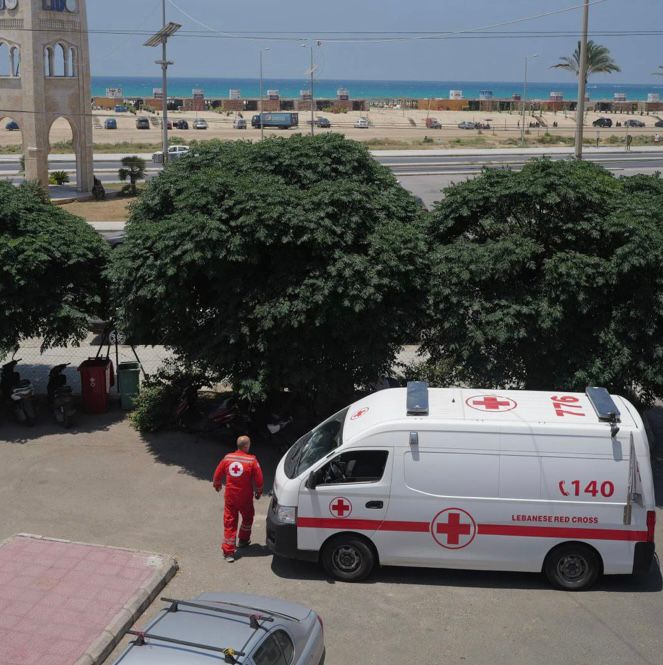Beirut: Israeli offensive hits hospitals and doctors, fueling healthcare crisis
The war waged by the Jewish state on Hezbollah has rendered nine facilities unusable and caused 178 deaths and 292 injuries among health workers alone. Almost USD 120 million will be needed to cover at least the basic expenses in the sector within the next six months. The commitment of the interim government and Minister Abiad to try to meet the needs of public and private healthcare.
Beirut (AsiaNews) - Rendered fragile by the war, Lebanon's once-rich public and private hospital networks, as well as makeshift shelters for displaced people, are combining their efforts under the leadership of Health Minister Firas Abiad to meet huge and growing needs.
‘We have not yet realised the full extent of the drama. We will see it more clearly when peace has returned,' believes the interim holder of the ministry, who is particularly concerned with emergencies and, above all, the reception centres for displaced persons. The latter host, according to official figures from the Beirut authorities, about 240,000 people out of an overall total of 1.3 million displaced by the conflict.
Experts' figures indicate that over 300,000 Lebanese have already found temporary refuge in Iraq and Syria. The balance of these two figures, compared to the total number of displaced persons, must be attributed to the reception of some of them in private homes, although their needs are as real as they are difficult to assess. During the first month of the all-out air offensive in Lebanon that began on 23 September, the toll of Israeli attacks in the Land of the Cedars rose to 3,013 dead and 13,553 wounded, according to the Ministry of Health itself.
Pending a ceasefire that is still far from materialising, the death toll is rising by 20, 30 or 50 people a day, with the Israeli Air Force not hesitating to bring down a building on its occupants to eliminate a Hezbollah leader. This is what happened again yesterday in Almate, in the Jbeil region, where 22 civilians who had fled from the Baalbeck region were killed by the collapse of the two-storey building in which they had been taken in by relatives out of family ties.
In its latest report, dated 1 November, the Lebanese Ministry of Health states that 178 people were killed and 292 injured in health and emergency services alone. And emergency workers of Shia Islamic associations are targeted in the same way as fighters. Three of them were killed in recent days when their vehicle was targeted in the Tyre region. Only Lebanese Red Cross ambulances are allowed to circulate in the regions affected by the attacks, provided they have coordinated their routes in advance with the army and the international Unifil force.
Overcrowded centres
For the time being, Minister Abiad is devoting all his attention to the reception centres, which are generally overcrowded and occupied by families. A major concern in these overcrowded centres is the risk of contagion from skin diseases such as scabies and bacterial infections including cholera and polio. ‘We have organised ourselves to carry out regular tests and checks on the drinking water,’ explains the former director of the government hospital Rafic Hariri in Beirut. The work currently focuses on four particular categories: the elderly, pregnant women, people with disabilities and newborn babies.
‘The volume of aid received is not proportional to the needs,’ continues Abiad, who estimates that nearly 0 million would actually be needed to cover healthcare costs for the next six months. Nevertheless, the minister says he is at the same time satisfied with the availability of the drugs needed to treat chronic illnesses. ‘There are about 45,000 people,’ he emphasises, ‘who suffer from them, a situation that reflects that of the general population of Lebanon, about 20 per cent of whom suffer from chronic diseases.
Hospitals out of service
‘Nine hospitals have been forced to close due to Israeli attacks since 23 September,’ added the minister, who went on to add that “others are out of service because they are located in unsafe areas”. According to a CNN report, ‘at least 24 hospitals are located within the 500-metre danger zone used by the Israeli army as a benchmark for civilian evacuation zones’. To reduce his vulnerability and protect his medical and care team, Elie Hachem, director of the Hôpital Sainte Thérèse, a private hospital on the edge of the southern suburbs, fortified his emergency department with sandbags. ‘In the event of further bombings,’ he explains, ’all services will be moved to the chapel on the ground floor, which is considered the safest part of the entire building.
‘The doctors and nursing staff are working beyond their normal capacity,’ says Health Minister Abiad, who goes on to ask how long this state of grave emergency will last. ‘There are no doctors leaving yet, but will it last? We will be able to hold out for a little while longer, but if it goes on for more than two or three months, we will need something else' to survive and to be able to continue to ensure the health system's resilience.
07/02/2019 17:28
12/02/2016 15:14







.png)










